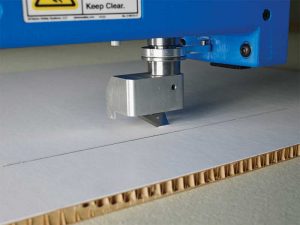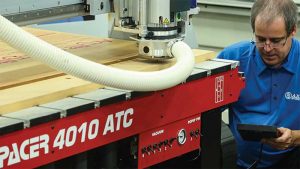Changing role of vendors
A vendor who serves only as a supplier and conduit for third-party tech support and maintenance from, what may be, distant locations is no longer enough. Today, vendors have more of a global presence because router users demand it. This presence is expected to include nearby branches that are more than dealerships because maintenance-related delays are the bane of every sign shop.
Even more important for companies is for their vendors to be business partners with proven track records. Buyer support is more likely with secure partners who have proven to be viable and responsive over the years. Business relationships are not intangible when it comes to ROI. If the vendor fails to meet expectations, the ROI will be unacceptable because of inevitable increases in maintenance, lost time, and repair costs (regardless of warranties).
True partnerships should be judged on the vendor’s understanding of the company’s operations, needs, and goals. In addition, potential buyers want reassurance their partner has the expertise to present quantifiable ROI projections, which include the timeliness and reliability of tech support and hiring more skilled technicians to respond to calls immediately. Further, equipment users expect the individual who is answering their calls to be a technician with the knowledge and expertise to troubleshoot machines, software, and cutting processes. Signmakers can lose valuable time when they get an answering service or an automated message.
CNC routers respond promptly and accurately, produce precise tolerance and, in most cases, are capable of four times the output compared to manual processes.
Issues and pain points for CNC routers
While costs and ROI figures are at the top of the list for most sign shops looking to purchase a CNC router, there are other important considerations that play a significant factor. Perhaps the biggest of these are process and workflow.
The router has been proven to significantly improve production, provide quality, and reduce time to complete a project, but it has to be the right router for the business. The machine must be productive for more than five years after the purchase. Considering many routers have a 20-year lifespan, it is incumbent upon the vendor to align the machine’s capabilities with the sign shop’s long-range production plans.
Companies generally take a macro view of financing as they analyze costs, impact on profitability, and short and long-term ROI when making a major investment in equipment such as a CNC router. Before embarking on a month-to-month lease/purchase agreement, there are a number of variables that should be taken into account—particularly if a sign shop is considering having a third-party perform its router cutting and shaping needs, including:
- Reliance on a third-party can lead to other costs as opposed to the savings realized
from manufacturing in-house (e.g. do-overs if the fabricator does not perform the right cut and other freight costs for shipping
to the fabricator). Savings from in-house manufacturing can be as high as 25 per cent when compared to expenditures associated with third-parties. - In many cases, there are longer waiting periods for production completion when a third-party fabricator fills work orders from larger customers.
- There can be a negative impact on cash flow from shipping, labour problems, and other related expenditures.
- Other variables include calculating the costs associated with how often the machine runs, upgrades, and the opportunity for future growth. An idle machine incurs costs as well.
- Cost versus value decision. The former is short term while the latter is strategic. Despite cost concerns, businesses should focus on the long term as a router can function and be productive for nearly two decades.
Other ROI essentials for CNC routers

Routers represent the epitome of automation by aiding large and small sign shops in expanding their offerings while reducing the amount of time it takes to complete a project.
In addition to all of the considerations mentioned above, a thorough ROI calculation should include the conversion of costs to opportunities. The latter is factored in multiple ways designed to grow the business in the short and long term, such as improving processes, increasing production and quality, and cost savings achieved through converting from manual cutting and shaping to automation.
A ROI calculation should begin by determining the number of labour hours and the associated costs with manually cutting and drilling parts, which could have been cut and shaped quickly using router automation. Another consideration should be what it takes to manually work with various materials in the signmaking process (e.g. plastic components, sign letters, and aluminum parts, etc.). Cutting and drilling require multiple tools and a considerable amount of time and labour. Contrast this with a CNC router in which material is loaded, a corresponding computer-aided design (CAD) file is selected, and the operator simply starts the machine.
CNC routers respond promptly and accurately, produce precise tolerances and, in most cases, are capable of four times the output compared to manual processes. For many sign shops, this typically results in far better use of workers and their time—both of which effectively lower operating costs.

Potential buyers want reassurance their vendor has skilled technicians who can respond to calls immediately.
ROI also manifests itself with the router’s ability to significantly reduce material waste through nesting—the process of establishing patterns that can be cut closer together. A sign shop’s chief financial officer will notice material costs to be significantly less than they were with a manual process. Further, another positive
this equipment offers is the reduced need for “do-overs” which can occur at an unacceptable rate with manually produced parts.
By reducing the potential for error and the subsequent costs associated, these too an be easily calculated into the monthly savings. That said, the fundamental reason for investing in a CNC router is business growth. Automation opens up the possibility of offering and providing more complex products—a benefit designed to offer more advantages for current customers and attract new ones.





